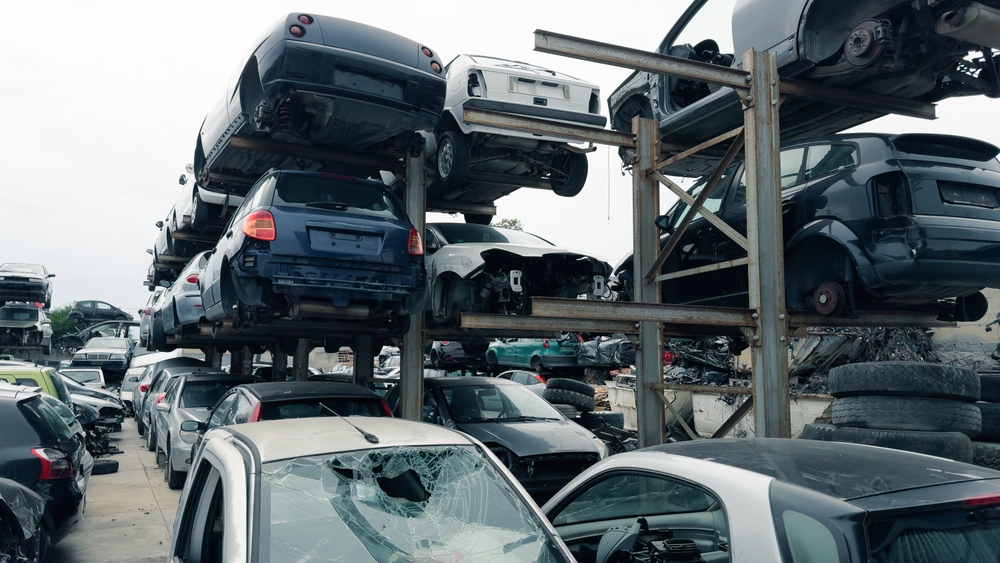Vehicle Dismantling Process: Clear the Car Scrap in 10 Steps

Every car has its journey. And when it reaches the end of its life, why not make it a proper farewell?
Whether your ride’s been through one too many road trips. Rusting in your driveway. Or just isn’t worth fixing anymore. The vehicle dismantling process can help you make a smart and eco-friendly exit. And bring some hidden value from your worn-out car.
At All Car Removals, we offer hassle-free junk car removal. With our services like cash for old cars and professional dismantling. We swoop in, haul away your clunker, free up your space, and fill up your pocket.
Ready to learn how your old car gets stripped, scrapped, and sent off in style?
Let’s get started.
Vehicle Dismantling Process in 10 Simple Steps
Here are the important steps involved in the vehicle dismantling process.
1. Assessing and Preparing Your Vehicle
The first step is evaluating your car’s condition to determine its eligibility for dismantling. If the repair costs outweigh the vehicle’s value or it’s no longer safe to drive. Dismantling is the only way forward.
At this stage, all personal belongings must be removed from the car. Don’t forget any essentials like paperwork, toll tags, or even loose change!
Once your car is cleaned and ready, professional car wreckers can inspect the vehicle. Noting which parts can be salvaged or recycled.
2. Disconnecting the Battery and Wires
Safety is critical especially when dealing with unsafe vehicles.
Remove the hood and disconnect the battery as the first step to dismantle your vehicle. It will avoid any electrical hazards & keep everyone safe.
After this, carefully detach all:
- Wires
- Hoses
- Bolts
- Sensors
- Electronic components
These parts are examined for potential reuse or recycling. As modern vehicles hold valuable electronic systems that are still in demand.
3. Draining Hazardous Fluids
Every car contains a range of fluids, including:
- Petrol
- Engine oil
- Coolant liquid
- Brake fluid
- Transmission fluid
These fluids are hazardous to the environment, so they must be carefully drained and stored. Car wreckers in Perth are trained to handle these substances responsibly. So, they don’t harm or pollute the environment during disposal.
Proper fluid drainage is then arranged as a safety measure. Reducing the risk of spills or contamination later in the process.
4. Removing the Engine and Transmission
The engine and transmission are two of the heaviest and most valuable components of a vehicle. Specialised tools and expertise are required to remove these parts safely.
The engine will be removed via the following steps.
- Remove the front grill
- Attach the engine lift
- Unbolt the engine bases
- Pull out the engine
Once removed, these components are inspected for functionality. If they’re still operable, they can be refurbished and resold. Otherwise, the materials are recycled and metals like aluminium and steel are melted down for reuse.
5. Stripping the Engine Compartment
After the engine is out, the engine compartment is stripped of all remaining parts. Expert handling is required in it to avoid damage.
The components being stripped include:
- Radiator
- Air conditioning system
- Carburettor
- Cooling fan
- Alternator and its belt
Each item is labelled for easy identification and sealed safely. Then they are evaluated for resale or recycling. This stage ensures no valuable part is left behind and reduces the volume of waste.
6. Removing Wheels and Tires
Wheels and tyres are next on the list. Their removal process is simple and you might already be aware of it. It includes:
- Lifting the car with a jack
- Loosening the nuts
- Removing the tyre
Tyres are removed and checked for their condition. If they’re still usable, they’re resold or repurposed. Worn-out tyres are sent for recycling to be turned into new rubber products or used in alternative ways.
Rims and other wheel parts are also assessed. Metal components are sent for recycling and reusable parts are offered for resale.
7. Stripping the Undercarriage
Once the tyres are removed, the undercarriage is easily accessible with the car still lifted. It contains crucial components like:
- Exhaust system
- Catalytic converter
- Suspension
- Brake pads
- Rotors
- Drums & shoes
- Brake lines
The catalytic converter is particularly valuable due to its precious metals. Such as platinum, palladium, and rhodium. These metals are extracted and recycled, obtaining maximum value from the vehicle.
The driveshaft and differential are also removed for either resale or recycling.
8. Dismantling the Body of the Vehicle
Once all internal and undercarriage components are removed, it’s time to dismantle the car’s body. This step involves:
- Removing the fenders, bumpers, and trunk hood
- Cutting and removing the windows
- Removing the doors and lights
- Removing the roof via cutting rear panels and roof supports
Glass components are separated and sent for recycling. While metal parts are sorted by type (steel, aluminium, etc.) to prepare them for the recycling process. This stage is essential to fully utilise the vehicle’s shell.
9. Removing the Interior
After dismantling the outer body, now finally it’s the interior’s turn. It will consist of the following steps.
- Removing the dashboard
- Getting rid of seats and carpeting
- Cutting the frame into smaller pieces
These materials are sorted into categories such as fabric, plastic, and metal. Usable parts are cleaned and prepared for resale. While damaged or outdated materials are sent for recycling.
It puts even the smallest parts of the vehicle to good use, reducing waste significantly.
10. Crushing the Vehicle
Once every salvageable part is removed, the vehicle’s remaining shell is sent for crushing.
Crushing reduces the car to a compact & manageable size and tube-like shape. Making it easier to transport to recycling facilities.
The crushed metal is then melted down by auto wreckers and reused in new products. Giving the vehicle’s materials a second life and reducing the demand for raw resources.
How to Know It’s Time to Dismantle Your Car
Not sure if it’s time to dismantle your car? Here are some signs to look out for:
Repair Costs Exceed the Vehicle’s Value | If fixing your car costs more than its resale value, it’s not worth holding onto. |
The Vehicle is Unsafe to Drive | A car with severe structural or mechanical issues can be dangerous on the road. |
The Model is Outdated | Some cars become so outdated that finding buyers or parts becomes nearly impossible. |
The Car Has Been Written Off | After an accident, some vehicles are deemed irreparable by insurers, making dismantling the most viable option. |
If any of these situations apply to you, consider dismantling your vehicle.
Also Read: Complete Guide to Choosing the Right Auto Wreckers in Perth
Conclusion
The vehicle dismantling process isn’t just about getting rid of a car. It’s about maximising its value while prioritising eco-friendly practices.
With processes like recycling materials, salvaging parts, or disposing of hazardous fluids. Old car removal by dismantling makes sure that nothing goes to waste. If your car is at the end of its journey. Consider working with trusted professionals to handle the process seamlessly.
Searching for Car Dismantlers Perth to Clear Your Junkyard?
Get Cash for Cars Perth with All Car Removals
Ready to bid farewell to your old, damaged, or unwanted vehicle? All Car Removals is here to help.
As leading dismantlers & car wreckers Perth. We offer top cash for cars, free pick-up, and eco-friendly disposal for your vehicle.
Get a hassle-free junk car removal experience and discover how easy it is to turn your unwanted car into instant cash. Let us take care of the dismantling and enjoy its rewards.
Check Our Car Removal Services

